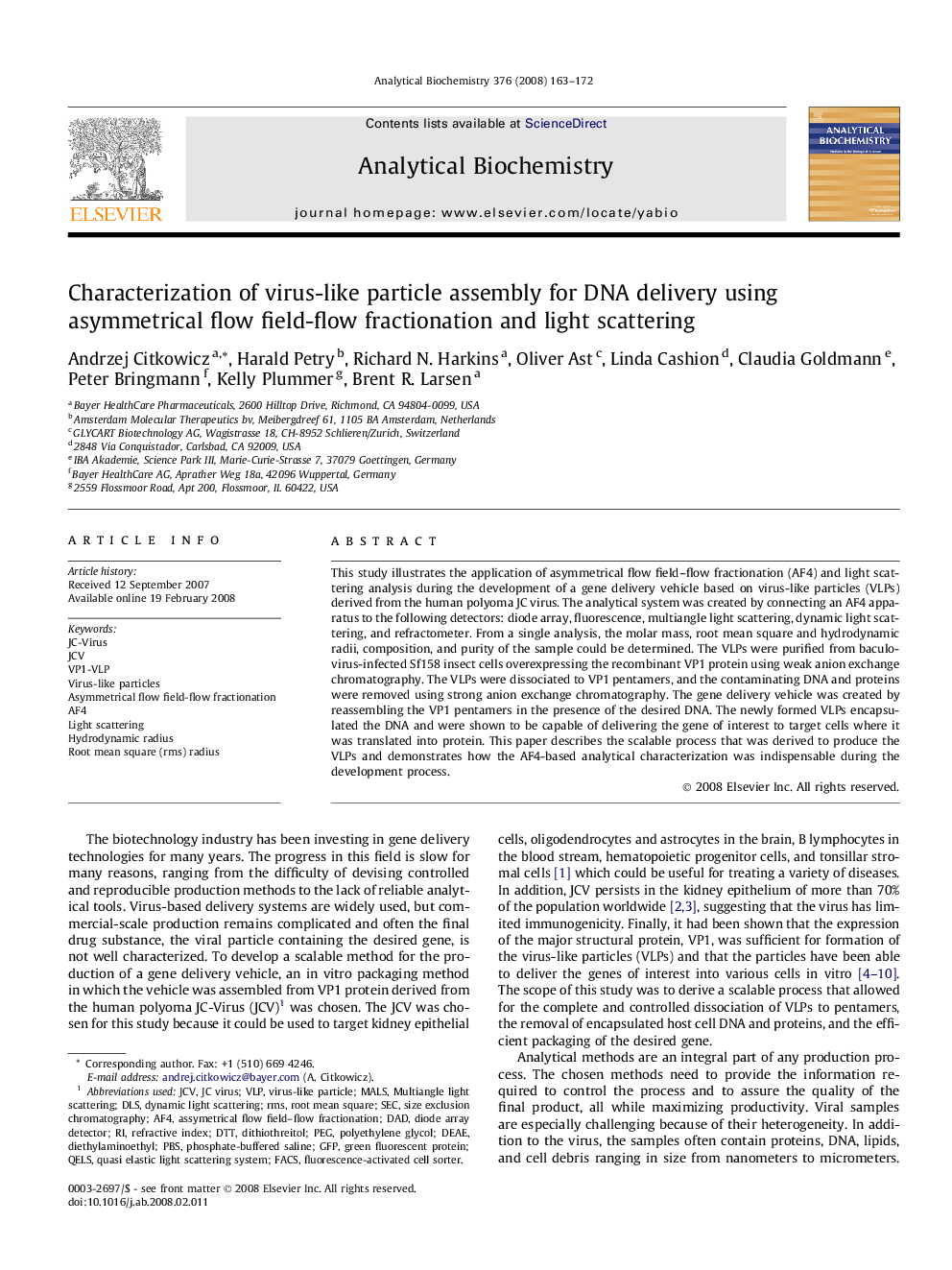| Article ID | Journal | Published Year | Pages | File Type |
|---|---|---|---|---|
| 1175745 | Analytical Biochemistry | 2008 | 10 Pages |
This study illustrates the application of asymmetrical flow field–flow fractionation (AF4) and light scattering analysis during the development of a gene delivery vehicle based on virus-like particles (VLPs) derived from the human polyoma JC virus. The analytical system was created by connecting an AF4 apparatus to the following detectors: diode array, fluorescence, multiangle light scattering, dynamic light scattering, and refractometer. From a single analysis, the molar mass, root mean square and hydrodynamic radii, composition, and purity of the sample could be determined. The VLPs were purified from baculovirus-infected Sf158 insect cells overexpressing the recombinant VP1 protein using weak anion exchange chromatography. The VLPs were dissociated to VP1 pentamers, and the contaminating DNA and proteins were removed using strong anion exchange chromatography. The gene delivery vehicle was created by reassembling the VP1 pentamers in the presence of the desired DNA. The newly formed VLPs encapsulated the DNA and were shown to be capable of delivering the gene of interest to target cells where it was translated into protein. This paper describes the scalable process that was derived to produce the VLPs and demonstrates how the AF4-based analytical characterization was indispensable during the development process.
